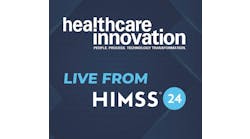In the first decade of the 21st century, deaths attributable to overdoses of prescription drugs saw an alarming spike in volume, led higher by a tripling of deaths due to opioid use. Amid this surge, Congress enacted the Ryan Haight Online Pharmacy Consumer Protection Act in 2008 as part of an attempt to rein in the burgeoning online marketplace for prescription drugs—particularly those involving controlled substances—which had largely evaded prior enforcement actions.
The degree to which the legislation has made a positive impact is up for debate. The number of deaths caused by an overdose of prescription drugs continued to rise until 2018, when it began modestly reversing the trend; however, the Covid 19 pandemic saw mortality numbers rise again across multiple categories of overdosing.
Aside from the public health and mental health emergencies the pandemic brought forth, Covid also highlighted the increased use of telehealth and digital health platforms. In a world of lockdowns and quarantines, telehealth received a trial by fire. By most accounts, it passed surprisingly well. According to McKinsey, the adoption of telehealth post-pandemic has stabilized at a rate that is about 38 times greater than in the past.
Covid-Era Policy Responses to the Telehealth Boom
As telehealth has surged, however, public policy has failed to move at the same speed. One accommodation that was made during the pandemic—and that had a material impact of the growth of telehealth during Covid—came in the form of a waiver from the Drug Enforcement Agency (DEA) concerning certain provisions of the Ryan Haight Act. Prescribing practitioners typically must conduct an in-person medical evaluation of the patient before administering controlled substances. Subject to the declaration of a public health emergency, DEA waived its in-person medical examination requirement and set forth different criteria for controlled substances.
Under the current guidelines, there are four requirements to write a legal prescription for a controlled substance. First, the prescription must be issued for a legitimate medical purpose. Second, the prescription must be issued by a practitioner acting in the usual course of their professional practice. Third, practitioners must act in accordance with applicable federal and state laws. Fourth, new patients may now get a controlled substance prescription via telemedicine (meaning, without an in-person examination) if the telemedicine communication was conducted using an audio-visual, real-time, and two-way interactive communication system.
The DEA waiver is applicable for as long as the duration of the public health emergency. The Department of Health and Human Services (HHS) initially declared an emergency in January 2020, and it has renewed the declaration over time, with the latest extension occurring July 15, 2022. HHS will have to make another determination in October 2022.
Even before the pandemic, telehealth was a hot topic and enjoyed significant coverage as an emerging modality for healthcare; however, there are segments within telehealth more dependent on the DEA waivers than others. For instance, the number of remote ketamine clinics have exploded since the onset of Covid due to a deepening national mental health crisis, combined with the rising popularity of telemedicine and the relaxed governmental regulations.[1Ketamine, once used primarily as a recreational drug, has emerged as a promising anti-depressant when administered in a controlled, clinical setting.
The question remains on what will happen when the COVID-19 public health emergency does end. Will the DEA simply reinstate the in-person medical examination requirement? Will it make the waiver permanent? Or will it break new ground and develop an entirely new regulatory scheme? The answer will have a material impact on the delivery of telehealth services.
The Fate of the Waiver and Its Impact on Telehealth
At present, we view a return to the original regulations under the Ryan Haight Act as unlikely. The medical community has “reported positive appraisals of the shift to e-mental healthcare in terms of cost-effectiveness, acceptability, and convenience.”[2] In particular, the Centers for Disease Control and Prevention (CDC) recognizes “with expanded access and improved reimbursement policies in place, as well as ongoing acceptability by patients and healthcare providers, telehealth might continue to serve as an important modality for delivering during and after the pandemic.”[3] Using telehealth appointments for chronic conditions, follow-up visits, and other non-urgent care can reduce unnecessary hospital visits, which in turn ensures triage and earlier treatment of the seriously ill.[4] The public echoes this sentiment. According to a study published by the COVID-19 Healthcare Coalition, 73% of patients who received at least one telehealth visit during the pandemic expect to continue receiving healthcare services virtually once the pandemic ends.[5]
There have been significant efforts to make the DEA waiver permanent after the pandemic subsides. In March 2022, the American Psychiatric Association, along with 71 other organizations, sent a letter to the DEA and HHS calling for the permanent removal of the in-person evaluation requirement for prescribing controlled substances via telemedicine.[6] In April 2022, U.S. Senators Rob Portman and Sheldon Whitehouse also sent a letter to the DEA and HHS “urging the agencies to use their authority under the Ryan Haight Act to ensure Americans can continue to access important medication…via telehealth once the COVID-19 public health emergency ends.”[7] Senators Portman and Whitehouse first tried to make the DEA waiver permanent in June 2020 when they introduced the Telehealth Response for E-prescribing Addiction Therapy Services (TREATS) Act.[8] The TREATS Act would give telehealth providers the ability to prescribe controlled substances without needing a prior in-person visit, thus making the DEA waiver permanent.[9] If this federal legislation (or something similar) does not pass, a conflict between federal and state law is likely. In some states, lobbying efforts have resulted in permanent regulations permitting the prescription of controlled substances via telemedicine. For example, Florida lawmakers enacted revisions to the state statute on telehealth to now allow providers to forgo a physical examination of a patient before using telehealth to provide healthcare services to the patient.[10] This revision also expanded the permissible use of telehealth to prescribe controlled substances.
Alternatively, a new regulatory scheme for telehealth could be crafted. It could take a moderate approach, recognizing both the demonstrated need for providing telehealth and balancing it against the interest in protecting patients with safety protocols. For example, the DEA could create a registration process for telemedicine providers. This would enable the agency to implement oversight over the practitioners of telemedicine, rather than restricting the practice of telemedicine. In fact, in 2018 Congress directed the DEA to create this kind of program as part of the SUPPORT for Patients and Communities Act, but the program has yet to be established.
In the upcoming months policymakers will determine the arc of telehealth’s growth trajectory in a broad sense, and for some operators, like remote ketamine clinics, public policy decisions could be existential.
Kimberly Chew, Karen Luong, and Natasha Sumner are attorneys in the Psychedelic and Emerging Therapies Practice Group at the Kansas City, Missouri-based Husch Blackwell law firm.
The authors wish to thank Husch Blackwell summer associates Taylor Crossley and Colleen Pert for their contributions to this article.[1] See David Dodge, The Ketamine Cure, New York Times (Nov. 5, 2021), https://www.nytimes.com/2021/11/04/well/ketamine-therapy-depression.html; See, e.g., TripSitter.Clinic, https://tripsitter.clinic/treatment (last visited July 15, 2022); See, e.g., Better U, https://www.betterucare.com/ (last visited July 15, 2022).
[2] World Health Organization [WHO], Mental Health and COVID-19: Early Evidence of the Pandemic’s Impact, at 5, WHO/2019-nCoV/Sci_Brief/Mental_health/2022.1 (Mar. 2, 2022), https://www.who.int/publications/i/item/WHO-2019-nCoV-Sci_Brief-Mental_health-2022.1.
[3] Lisa M. Koonin et al., Trends in the Use of Telehealth During the Emergence of the COVID-19 Pandemic — United States, January–March 2020, Centers for Disease Control and Prevention, Oct. 2020 (emphasis added).
[4] Praveen Kumar et al., Telemedicine in the COVID-19 era: the New Normal, Cureus, Oct. 2020.
[5] See Libby Baney et al., The Future of Telehealth and the Ryan Haight Act Post-Pandemic, Nat’l Ass’n of Bds. of Pharmacy (Apr. 22, 2021), https://nabp.pharmacy/news/blog/the-future-of-telehealth-and-the-ryan-haight-act-post-pandemic/.
[6] Letter from American Psychiatric Association et al. to Anne Milgram, Administrator, Drug Enforcement Administration [DEA] and Xavier Becerra, Secretary, Dep’t of Health and Hum. Servs. [HHS] (Mar. 3, 2022).
[7] Press Release, Rob Portman, Portman, Whitehouse Urge DEA and HHS to Extend Americans’ Access to Telehealth Once the COVID-19 Public Health Emergency is Terminated (Apr. 1, 2022), https://www.portman.senate.gov/newsroom/press-releases/portman-whitehouse-urge-dea-and-hhs-extend-americans-access-telehealth-once#:~:text=Under%20the%20Ryan%20Haight%20Act%2C%20an%20in%2Dperson%20examination%20is,other%20necessary%20drugs%20via%20telehealth.
[8] Id.
[9] Id.
[10] Fla. Stat. § 456.47 (2022).
huschblackwell.com


